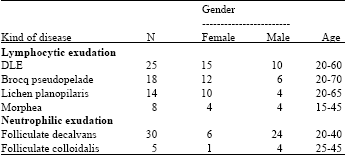Research Article
Evaluation of Cicatricial Alopecia in Iran
Student research committee, Tabriz University of Medical Sciences, Iran
Effat Khodaeiani
Student research committee, Tabriz University of Medical Sciences, Iran
Mehdi Amirinia
Student research committee, Tabriz University of Medical Sciences, Iran
Mohamad Goldust
Student research committee, Tabriz University of Medical Sciences, Iran









